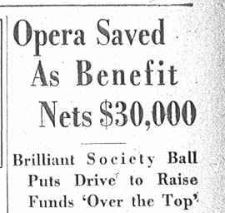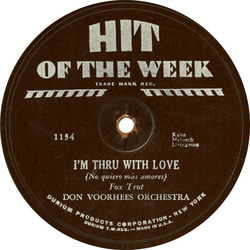Lucrezia Bori Saved the Metropolitan Opera during the Great Depression
 Did you know that in 1933, Lucrezia Bori began a career as a fundraiser for the Metropolitan Opera during the Great Depression on top of performing?
Did you know that in 1933, Lucrezia Bori began a career as a fundraiser for the Metropolitan Opera during the Great Depression on top of performing?
Retiring, later that she wanted at age 48, Lucrezia Bori helped save the Metropolitan Opera. While the Metropolitan continued to sell tickets to performances with no difficulty despite the Great Depression. The contributions of its stockholders fell off dramatically and by the end of 1932 the board of directors found that a great deal of money would be needed if the next season were to be held.
